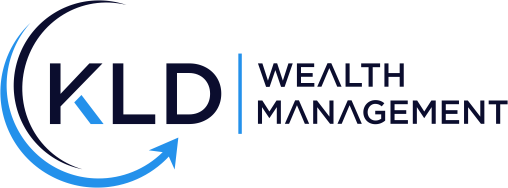Get in touch
Call or Text:
937-404-5180
Email:
dwiedmeyer@kldwealth.com
As you prepare for retirement, your IRA may seem like a golden ticket to a stress-free future. However, the reality is that it could potentially be one of your biggest obstacles to maintaining financial security. Specifically, the problem lies with Required Minimum Distributions (RMDs) and the tax implications they bring. If you’re not prepared, your well-planned retirement could face financial strain, unexpected tax bills, and a loss of wealth.
Let’s explore how to ensure your IRA doesn’t ruin your retirement and how smart tax planning can help you avoid these pitfalls.
What Are RMDs and Why Do They Matter?
If you have a traditional IRA, 401(k), or other tax-deferred retirement accounts, the IRS mandates that you begin taking RMDs when you turn 72. The RMD is the minimum amount you must withdraw from your account each year, and if you miss it, the penalties are severe—up to 50% of the amount you should have withdrawn. While this is an understandable requirement (after all, the IRS wants its cut of your retirement savings), it can create significant issues in your financial planning.
One of the biggest challenges with RMDs is that they are treated as taxable income, which can push you into a higher tax bracket. This means more of your retirement income may be going to Uncle Sam than you initially planned. A study by the Center for Retirement Research found that over 80% of retirees will pay taxes on their Social Security benefits, largely due to RMDs increasing their taxable income. These increased taxes can eat away at your retirement savings, reducing your ability to live the lifestyle you envisioned in your golden years.
The Hidden Risks of Ignoring RMDs
It’s not just about the penalties for missing an RMD; failing to plan for RMDs can have ripple effects throughout your entire financial plan. Let’s say you’ve been diligently saving, contributing to tax-deferred accounts for decades. Suddenly, when you turn 72, those accounts become a tax liability. For example, if you have $500,000 in a traditional IRA and your RMD for the year is $20,000, that $20,000 will be added to your taxable income.
If you’re not careful, RMDs could:
- Push you into a higher tax bracket
- Increase the taxes you pay on your Social Security benefits
- Subject you to additional Medicare surcharges
- Limit the value of other deductions and credits
A report by Fidelity shows that retirees with large IRA balances can see tax rates spike to as much as 46.3%, especially if their RMDs interact with other taxable income sources. This is why understanding RMDs and developing a tax strategy is so crucial.
The Role of Tax Planning in Avoiding RMD Pitfalls
Now that you know the risks, how can you protect yourself? The key is proactive tax planning—something we’ve discussed in previous posts, like “ Roth Conversions and the Importance of Tax-Free Income in Retirement ” and “ Smart Strategies for Tax Planning in Retirement .” You can avoid the tax traps set by RMDs with the right strategies in place.
1. Roth Conversions
One of the most effective ways to minimize the impact of RMDs is to convert a portion of your traditional IRA to a Roth IRA before you hit 72. Unlike traditional IRAs, Roth IRAs have no RMDs, and qualified withdrawals are tax-free. By strategically converting some of your assets in low-income years, you can reduce future RMDs and avoid a tax bomb later in retirement.
According to Vanguard , converting to a Roth IRA can save retirees tens of thousands of dollars in taxes over the course of their retirement, especially if done before RMDs start.
2. Timing Your Withdrawals
Another important factor is the timing of your withdrawals. Rather than waiting until the last possible moment to take your RMD, consider withdrawing earlier to spread out your tax liability. This could prevent you from being pushed into a higher tax bracket. Coordinating this with your other income sources, such as Social Security or pension payouts, can also mitigate tax impacts.
3. Qualified Charitable Distributions (QCDs)
If you’re charitably inclined, you can use your RMDs to give back while avoiding taxes. A QCD allows you to transfer up to $100,000 from your IRA directly to a qualified charity without counting it as taxable income. This is a powerful way to satisfy your RMD requirements without increasing your tax bill.
How Personal Financial Planning Can Help
While RMDs and taxes can be daunting, they don’t have to derail your retirement if you have a personalized financial plan . As a fee-only financial planner, my role is to help you navigate these complexities. Through comprehensive planning, we can forecast your RMDs, optimize your tax strategy, and identify the best opportunities to protect your income.
Here’s how a well-structured plan can help:
- Predict Your Future Tax Liability: We’ll estimate your RMDs and explore tax-efficient strategies, such as Roth conversions and charitable giving, to ensure your tax bill doesn’t erode your retirement savings.
- Income Coordination : By looking at your entire retirement income picture, we can develop strategies to reduce the impact of RMDs on your tax bracket, Social Security taxes, and Medicare premiums.
- Ongoing Adjustments : Tax planning isn’t a one-and-done task. As tax laws evolve and your personal circumstances change, we’ll continuously review and adjust your strategy to ensure you’re making the most of your retirement savings.
Don’t Let Taxes Ruin Your Retirement—Plan Ahead
The bottom line is this: RMDs are inevitable, but they don’t have to be devastating. By understanding how they work and incorporating proactive tax planning into your overall financial strategy, you can ensure your retirement savings last as long as you do.
If you’re concerned about how RMDs might impact your retirement, don’t wait until you’re facing a hefty tax bill. Reach out today to start planning your strategy. Together, we’ll create a roadmap that protects your income, minimizes taxes, and keeps you on track for a comfortable, worry-free retirement.
Ready to take control of your retirement? Schedule a consultation today and discover how personalized tax planning can safeguard your financial future.



Phone
937-404-5180
706 Deerfield Rd.
Lebanon, OH 45036
Get financial wellness tips, directly to your inbox.
Contact Us
We will get back to you as soon as possible.
Please try again later.
All Rights Reserved | KLD Wealth | Privacy Policy | Form ADV
Advisory services offered through KLD Wealth Management, LLC, an investment adviser registered with the state(s) of Ohio. Advisory services are only offered to clients or prospective clients where KLD Wealth Management, LLC and its representatives are properly registered or exempt from registration.
The information on this site is not intended as tax, accounting or legal advice, nor is it an offer or solicitation to buy or sell, or as an endorsement of any company, security, fund, or other offering. Information provided should not be solely relied upon for decision making. Please consult your legal, tax, or accounting professional regarding your specific situation. Investments involve risk and have the potential for complete loss. It should not be assumed that any recommendations made will necessarily be profitable.
The information on this site is provided “AS IS” and without warranties either express or implied and the information may not be free from error. Your use of the information provided is at your sole risk.
